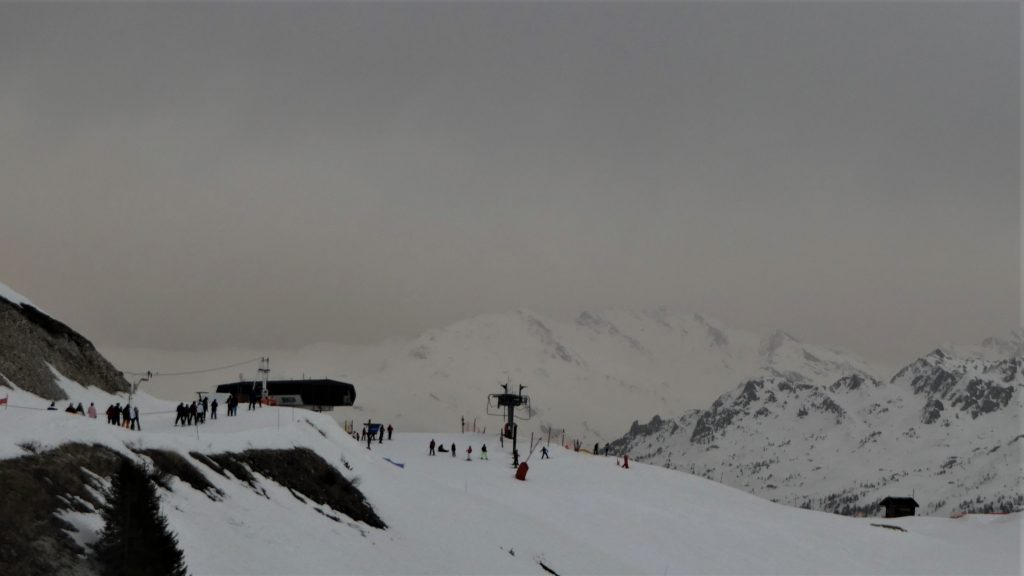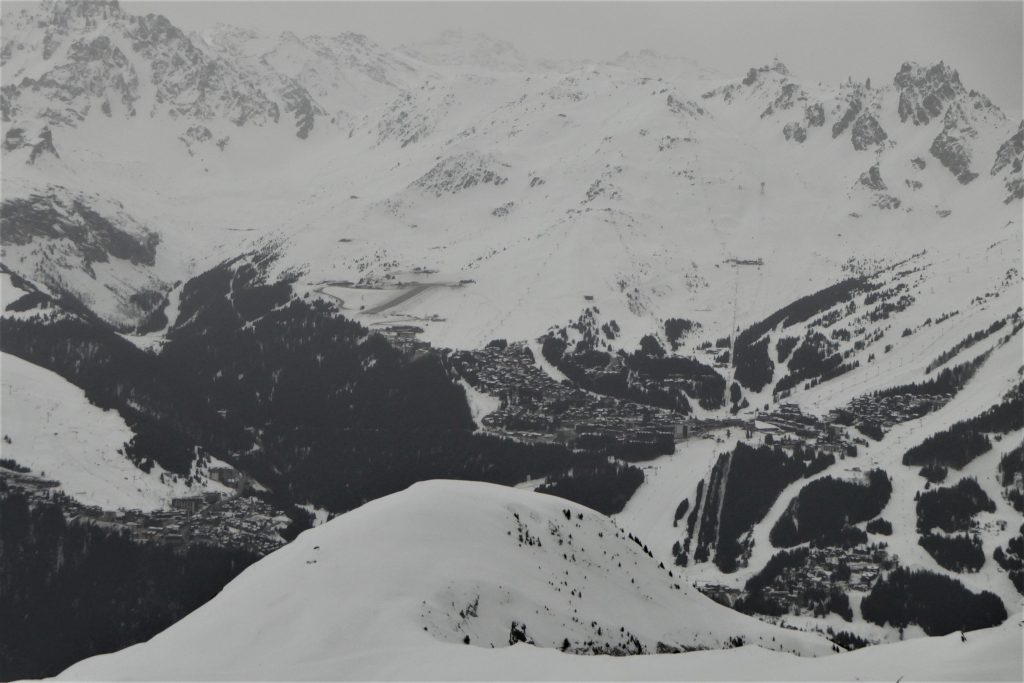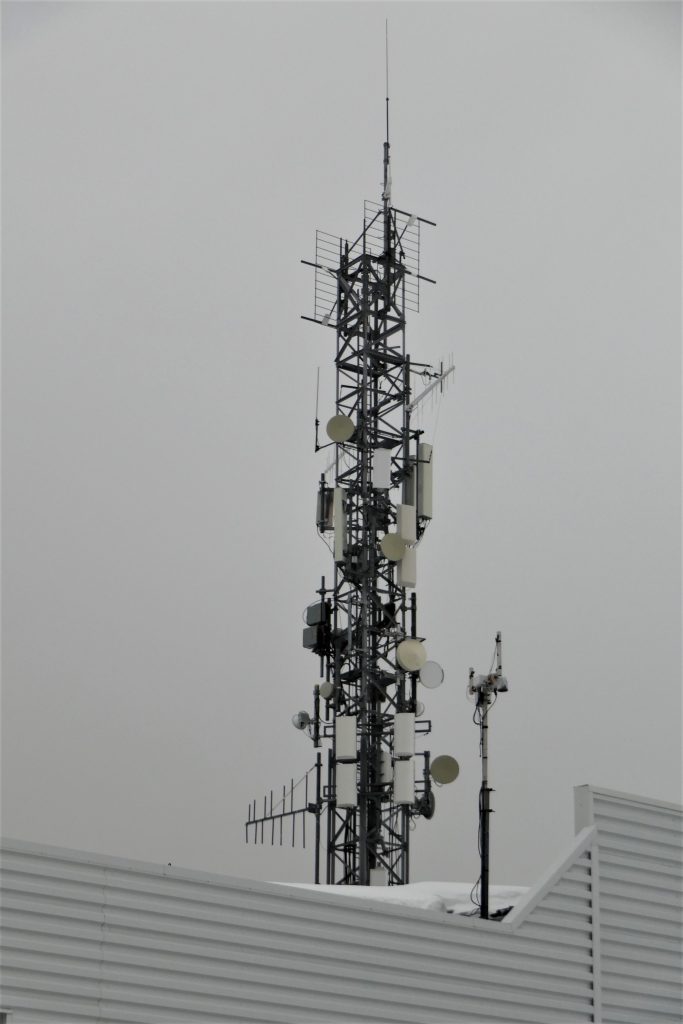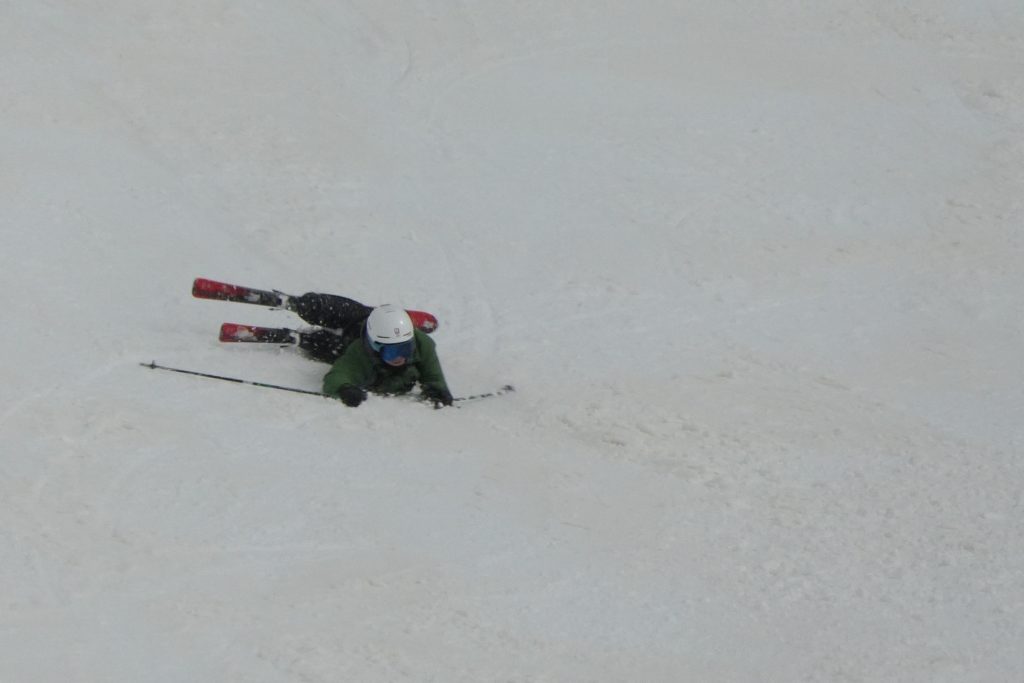Eilidh’s Daily Word of Wisdom: “The brain needs legs to move!” (We’ll get back to that later!)
Slalom
Harrison: 18.99 seconds (thanks to his strong carving!)
Alex: 21.88 seconds
Eilidh: DSQ
Independent Leg Action
How do you rapidly develop hip angulation skills? Yesterday clarified that going directly for “hip angulation” was not going to be rapid enough for the results we want to see. The underlying issue is that everyone was skiing two footed so we needed to delve into the subject of “independent leg action”. Here is an outline of the approach taken…
- Static Exercise – extending uphill leg – on uphill edge – supported physically from below
- Audible (shouted) correction with me skiing above and behind
- Skating
- Skating Timing
- Skiing with ski tips diverging
- Diverging Parallel
- Windscreen Wiper Pivot
Static Exercise – extending uphill leg – on uphill edge – supported physically from below
Skier static, standing skis across the slope. I stood below the skier on the mountain and gave physical support while the uphill leg was properly extended – uphill ski on uphill edge – downhill shoulder and hip (not so much hip) being pushed hard against me.
This is how a new turn is initiated – from one leg. The hip joint for that leg is simultaneously pulled backward so that it slots underneath the Centre of Mass during the whole turn.
The turns go from one leg to the other leg – the skiing being essentially one legged.
The static exercise was intended to communicate the appropriate feelings and range of extension of the leg. Although the leg is extended during the turn initiation this is not to send the skier (Centre of Mass) upward – it is to send the CoM downhill and toward the ground – think “motorbike making a high speed turn”.

The above image shows Alex (the racer) doing different things with each leg – ALL of the pressure being on his right leg/ski – especially on the front of the ski.
The feet are not close together and he is not skiing “two footed”.
Audible (shouted) correction with me skiing above and behind
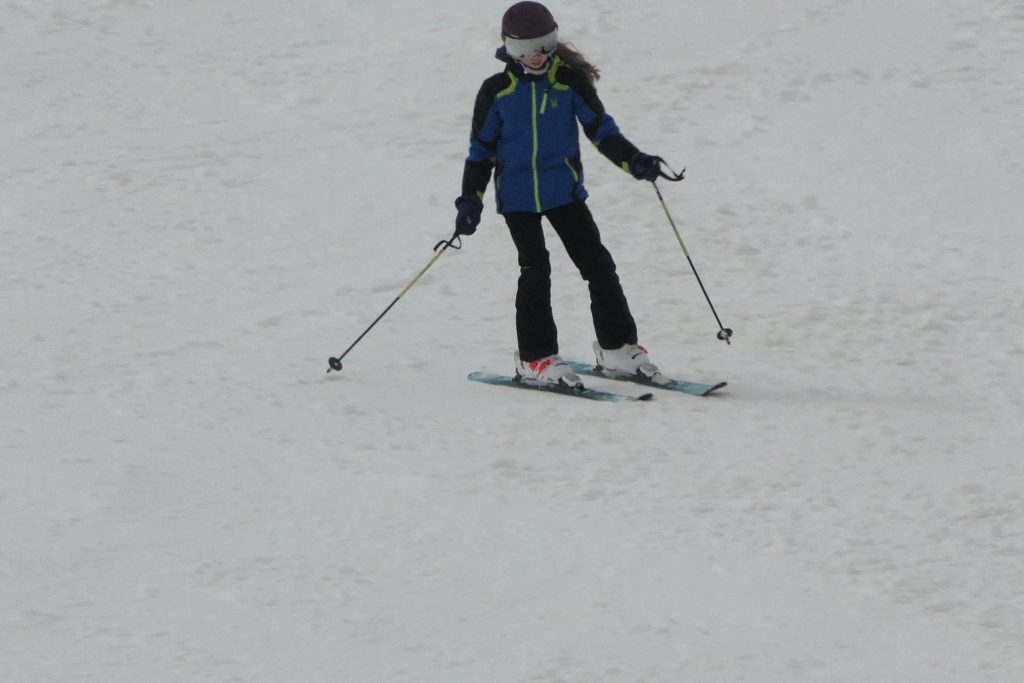
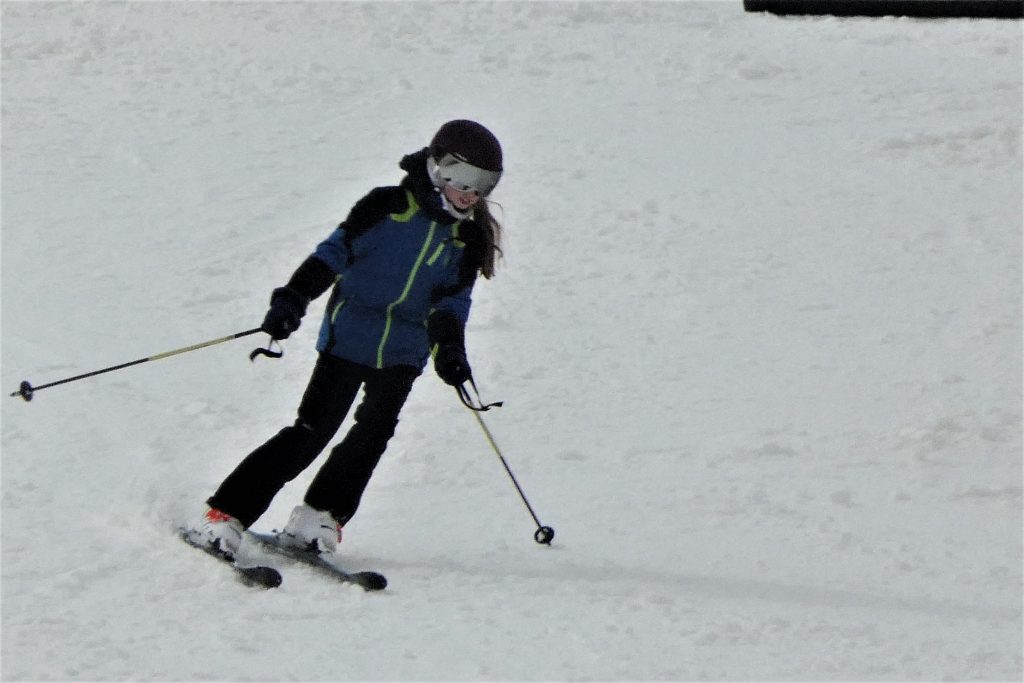
Eilidh is amazing – when skiing behind her every correction that I asked for was made accurately and maintained. Speed was well controlled and turns were smooth and the ski working from start to end.
Photos: Wide stance – independent legs, solid turn initiation (using the uphill ski), directing the CoM, natural angulation and timing.
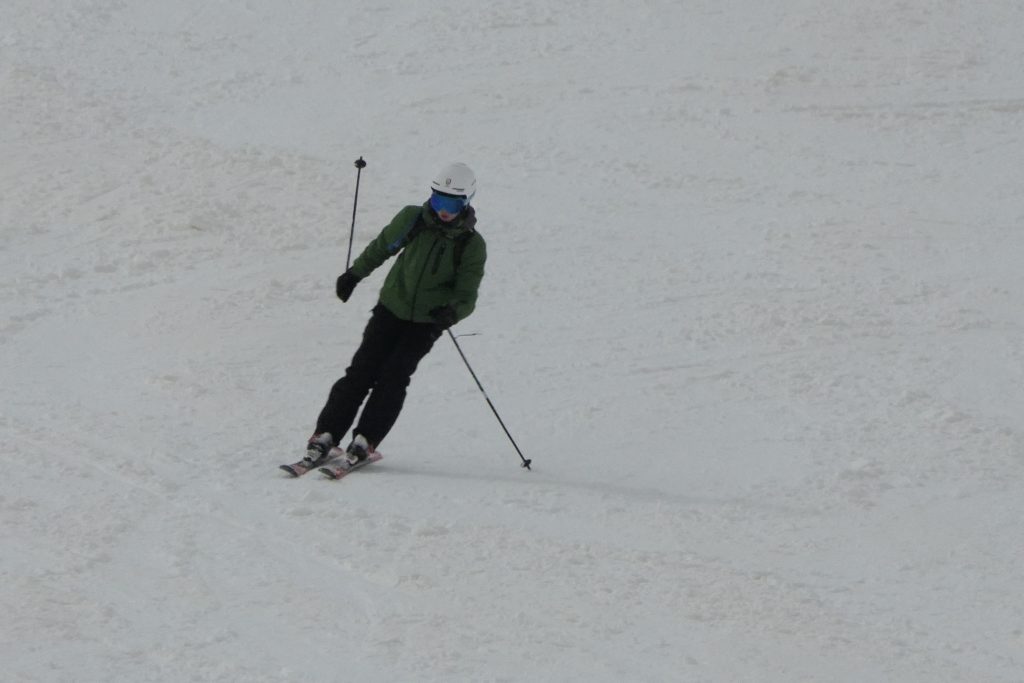
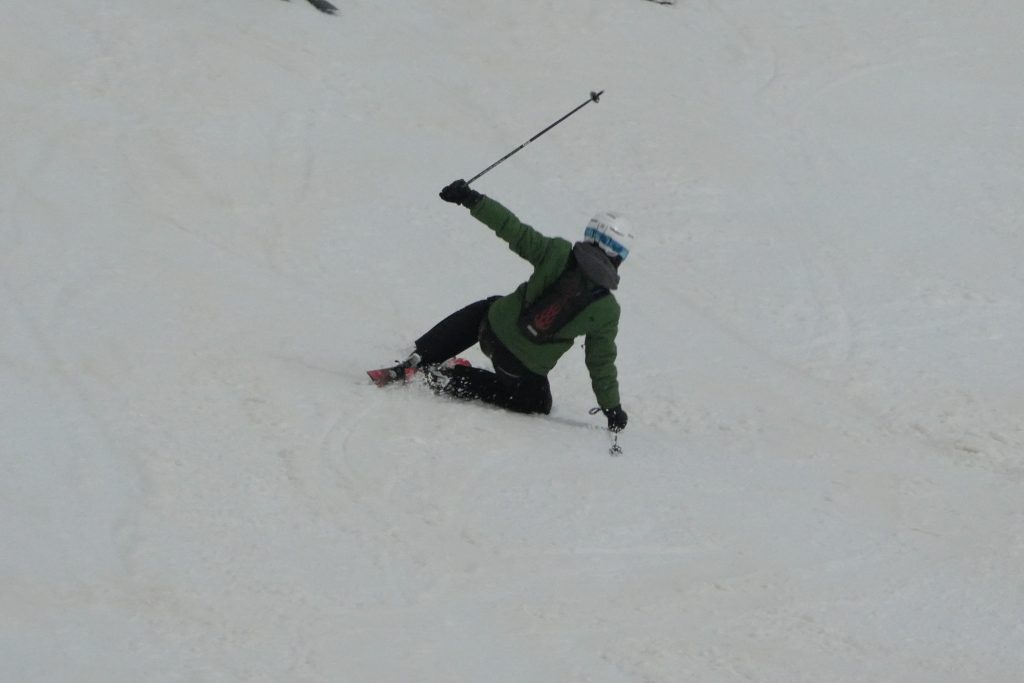
Harrison is trying his best but struggling to make changes. This is largely because he is already relatively strong and comfortable with his own way of skiing and it’s temporarily blinding him to new sensations that require him to do very different things. The best thing to do is listen to the feedback, watch the videos and let it happen in its own good time. “Persistence is Omnipotent”!
Photos: Feet together – no angulation – confusion leads to a fall on the inside ski – when all the pressure should be on the outside ski.
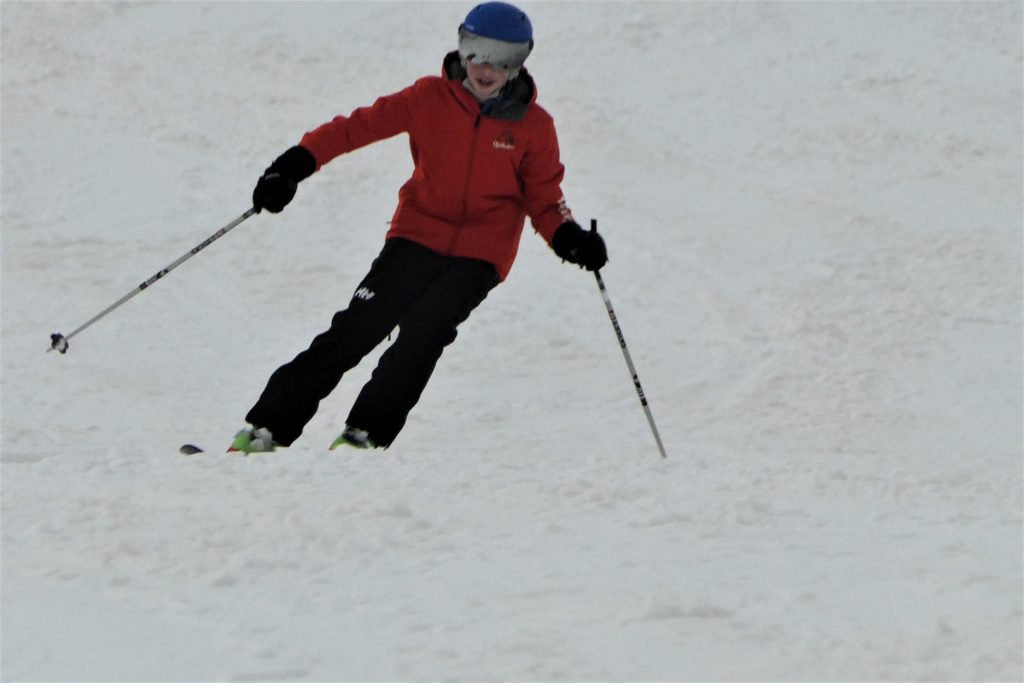
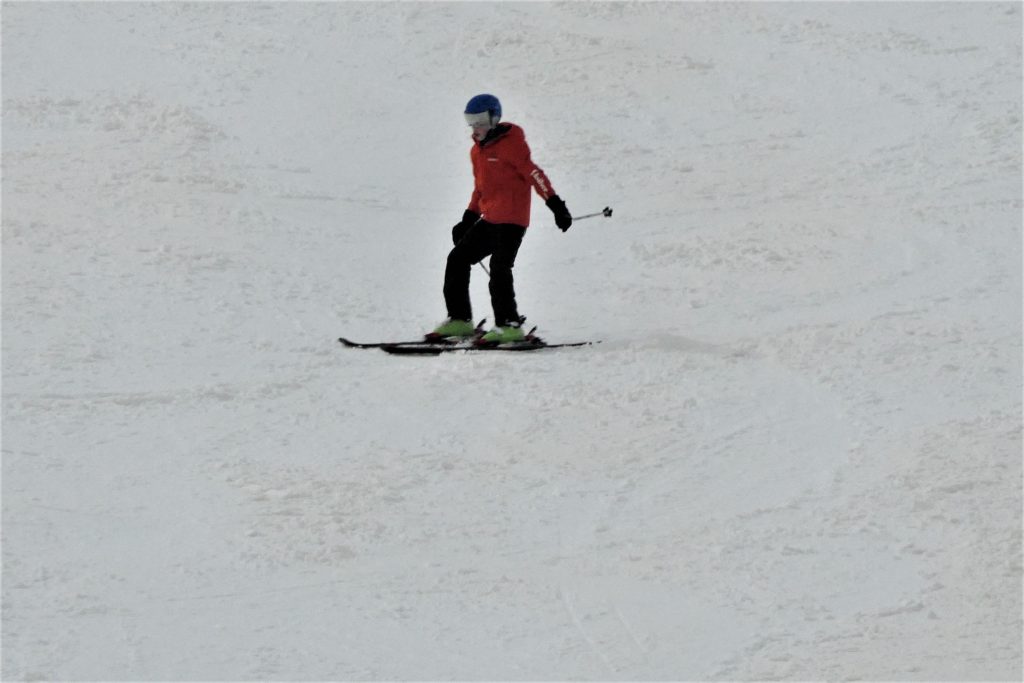
Alex
Alex is making real progress – proper angulation is appearing – wide stance is functional with independent use of the legs and working the outside ski from the start of the turn most times.
Still generally not far enough forward on the balls of the feet – often leaning on the backs of the boots! (Photo)
Skating
Skiing is a variation of skating. None of the children skate and this is where the difficulty of developing independent leg action comes from. I strongly recommend roller blades or decent roller skates for changing this situation.
When asked about how to make forward motion when walking all the children answered that you propel yourself with the feet and legs. In fact that’s very inefficient – propulsion should come through falling forward with gravity and stepping the foot forward to land beneath you and raise you back up again. This is how the upright body functions just like our ski pole exercise – with the brain making calculations all the time and always active. Yes “The brain needs legs to move” – but it also needs gravity to walk. Humans are the best endurance runners on the planet because being bipedal (only two legs) we can use gravity incredibly efficiently for propulsion. When skating we diverge the skis and fall in the direction of one ski tip or the other – converting this into a slide. Entry into a turn should be done this way – but without necessarily diverging the inside ski.
Skating Timing
Timing for a turn should be “down/up” like motorbike going into and out of a high speed turn. Skating also has a down/up rhythm – and both of those things resonate together when skiing when you keep the legs active and working correctly. We worked at skating downhill on a gentle gradient then making the “fall” inwards into a turn so it was unnecessary to step the inside ski. The limit here was clear because nobody could actually skate.
Much more time would need to be used to develop skating skills on the skis. The “Beginner’s” link at the top of the page shows some of the skating exercises we will be doing tomorrow.
Skiing with Ski Tips Diverging and Diverging Parallel
I showed how it was simple to ski with the skis diverging at the tips. This actually enhances the turn initiation as it makes it easier to enter the new turn – from the uphill edge of the diverged uphill ski.
Everyone made a good effort to copy me – though I was mostly using it to expand their ideas of skiing.
In 1991 when I was teaching in California the Americans called their most “advanced” turn the “Diverging Parallel”. The obvious contradiction of terms always amused me – but their idea was correct.
Windscreen Wiper Pivots
Pivoting with both feet at the same height on the mountain – not one going around and below the other on each turn. This has the skis turning independently and eliminates body and hip rotation. The feet must be held apart – so it’s useless for skiing bumps and deep off piste – but it’s great on the piste and cultivates independent leg action and control of rotation.
